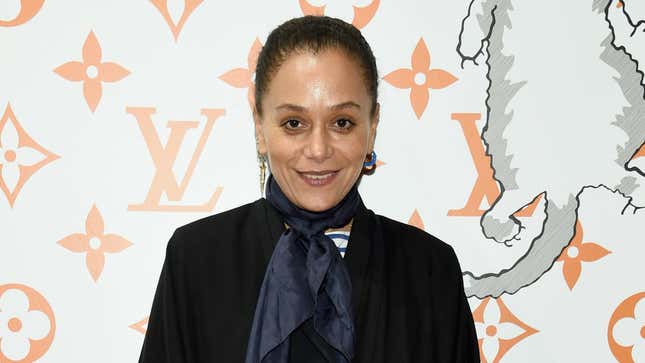
If the world at large is struggling with its response to the outcry that black lives matter, so, too, is the fashion industry—much of which, in the words of one fashion editor to The Glow Up, has quite obviously been “scrambling” to show solidarity in recent weeks. The lack of both preparedness and representation within the industry’s ranks have been telling; to paraphrase the immortal words of The Devil Wears Prada’s Miranda Priestly, “Why was no one ready?”
While the rest of the industry may be struggling with that question, Harper’s Bazaar was ready with an answer: After an exhaustive search for a new editor-in-chief following the January announcement of longtime EIC Glenda Bailey’s departure, on Tuesday it was announced that the coveted spot would be filled by Vanity Fair Executive Fashion Director Samira Nasr.
As a woman of Lebanese-Trinidadian heritage, Nasr will be the first black woman—and woman of color—to helm the 153-year-old publication, starting her role as editor-in-chief of Bazaar on July 6.
“My lens by nature is colorful and so it is important to me to begin a new chapter in Bazaar’s history by shining a light on all individuals who I believe are the inspiring voices of our time,” Nasr said in a taped announcement of her new role, in which she both acknowledged her own intersectionality and expressed gratitude for those leading the current protest movement, saying “I see you, I thank you, and I hope we can join forces to amplify the message of equality because black lives matter.”
The timing couldn’t be better, as journalists have been coming out of the woodwork as of late to indict several fashion publications and parent companies—Paper magazine, Refinery29 and Condé Nast among them—for microaggressions, pay inequities, tone policing, sidelining, and demeaning treatment of their black talent, in particular.
Nasr’s appointment will no doubt mark a sea change at Bazaar—hopefully, in much the same way Edward Enninful’s ascension at British Vogue immediately ushered in inclusity at the legacy publication. “It is a tremendous privilege to be entrusted with moving this legacy brand into a new era—one that is colorful, inclusive, and celebrates the beauty of fashion on every platform,” Samr said in a statement to Bazaar.
Like Enninful, Nasr’s extensive experience and accomplishments in the industry should dispel presumptions that she is a token or diversity hire. Aside from reportedly beating out other industry veterans (h/t New York Post), as Bazaar points out, prior to her role at Vanity Fair, Nasr spent five years as fashion director at Elle. Prior to that role, she was style director for InStyle and has styled countless campaigns and fashion shoots since starting her career as an assistant to Vogue’s legendary creative director Grace Coddington after earning her master’s in journalism from New York University.
And if Nasr looks familiar, it might be because of her recent appearance in Tracee Ellis Ross’ inaugural campaign for Pattern, which Nasr also styled. The two women have been best friends for over 25 years; accordingly, Ross had words of congratulations for her bestie, posting an online tribute via Instagram which read, in part:
“This is a win for everyone. My heart is bursting. I am so proud.
I’ve never been shy about my love for this woman. I could not do this life thing without her.”
A win for everyone, indeed. Congratulations, Samira Nasr. We’re looking forward to a more inclusive world at Bazaar.

